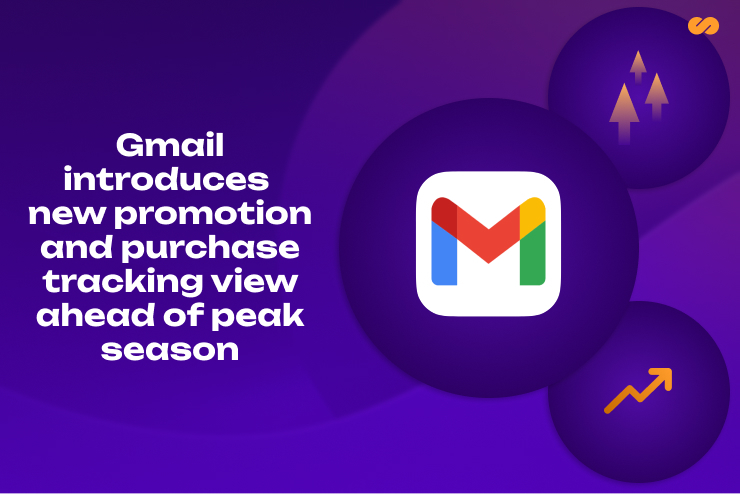Google’s U-Turn on Third-Party Cookies: The Background
For over two years, the digital marketing world has been bracing itself for a monumental shift: the end of third-party(TP) cookies. Google, which holds the largest share of the browser market with Chrome, initially announced plans to phase out third-party cookies by 2022, then delayed to 2023, and now, in a surprising turn of events, has decided not to eliminate third-party cookies at all—at least, not in the foreseeable future. This decision has sent ripples through the marketing and advertising industry, prompting a reassessment of strategies, technologies, and expectations regarding TP cookies.In this article, we’ll explore the reasons behind Google’s latest decision to keep third-party cookies in the browser, the impact on businesses, and how companies can adapt to this ongoing uncertainty surrounding TP cookies.

Google’s U-Turn on Third-Party Cookies: The Background
Google's initial announcement to phase out third-party cookies was a direct response to growing privacy concerns and regulatory pressures, such as the General Data Protection Regulation (GDPR) in Europe and the California Consumer Privacy Act (CCPA). Many saw this move as a positive step towards enhancing user privacy and data protection online, reducing reliance on TP cookies.
However, the decision faced significant resistance from various stakeholders, including advertisers, publishers, and even some regulators. The advertising ecosystem was deeply concerned about the potential loss of third-party cookies, a primary tool used for tracking user behaviour, targeting ads, and measuring campaign effectiveness. After lengthy discussions and extensive feedback from industry players, Google has decided to keep TP cookies in place for the time being.
Why Google browser is keeping Third-Party Cookies (For Now)
So, why did Google backtrack on its decision to eliminate third-party cookies? Here are some key reasons:
The Complexity of Replacing Third-Party Cookies:
Replacing third-party cookies with a viable alternative has proven to be far more complex than initially anticipated. Google's proposed Privacy Sandbox aimed to balance user privacy with the needs of advertisers. However, this new framework faced criticism over its effectiveness, transparency, and fairness. After years of development, it became clear that more work was needed to create a solution that satisfied all parties involved and could effectively replace TP cookies.
Concerns Over Market Disruption Due to the Absence of Third-Party Cookies:
The removal of third-party cookies would have caused significant disruption across the digital advertising landscape. Many smaller businesses and publishers rely heavily on TP cookies to generate revenue through targeted advertising. Google's decision to delay, and potentially reconsider, the phase-out of third-party cookies reflects an understanding of these concerns and a desire to avoid causing widespread financial instability in the market.
Regulatory Challenges and Scrutiny Related to Third-Party Cookies:
Even as Google sought to introduce new tracking technologies, regulators worldwide raised concerns about the implications of these changes. Some argued that Google's plans could lead to anti-competitive behavior, consolidating its power over online advertising. By keeping TP cookies, Google avoids further regulatory scrutiny and maintains its existing business model.
Feedback from the Advertising Industry:
Google's decision is also a response to the feedback it received from the advertising industry. Advertisers and publishers expressed concerns about the lack of readiness and potential economic fallout in a world without third-party cookies. By maintaining the status quo and retaining third-party cookies, Google allows more time for the industry to prepare for future changes.
What Does This Mean for Businesses Regarding Third-Party Cookies?
Google’s decision not to eliminate third-party cookies—for now—has left many businesses in a state of limbo. On one hand, it provides temporary relief for marketers and advertisers who depend on third-party cookies for targeting and measurement. On the other hand, it prolongs the uncertainty and complicates long-term planning involving TP cookies.
Here’s what businesses need to consider in light of this new development related to third-party cookies:
Maintain Flexibility in Marketing Strategies Amidst Third-Party Cookie Uncertainty:
While TP cookies are not going away just yet, the long-term future of third-party cookies is still uncertain. Businesses should remain flexible and continue to develop alternative strategies that rely less on TP cookies. Diversifying data sources, investing in first-party data (FPD) collection, and exploring cookie-free solutions will ensure they are prepared for any future changes.
Continue to Develop First-Party Data Capabilities Despite the Continued Use of Third-Party Cookies:
First-party data—information directly collected from customers through their interactions with a brand—remains a valuable asset. Even though third-party cookies are still in play, businesses should not abandon efforts to strengthen their FPD capabilities. This data is more accurate, reliable, and collected with explicit customer consent, offering better opportunities for personalization and engagement than third-party cookies.
Adapt to Evolving Privacy Regulations While Managing Third-Party Cookies:
Privacy regulations will continue to evolve, with or without the end of third-party cookies. Businesses must stay informed and compliant with the latest rules and guidelines to avoid legal pitfalls and maintain customer trust. Prioritizing transparency in data practices and securing customer consent will remain essential, especially in a landscape still influenced by third-party cookies.
Explore Contextual Advertising as an Alternative to Third-Party Cookies
The uncertainty surrounding third-party cookies presents an opportunity to explore alternative advertising methods, such as contextual advertising. Unlike behavioral targeting, which relies on third-party cookies for tracking user behavior across sites, contextual advertising places ads based on the content of a webpage. This method can deliver relevant ads without compromising user privacy or depending on third-party cookies.
The Role of SaleCycle in Navigating the Third-Party Cookie Landscape
Amidst the ongoing debate over third-party cookies, SaleCycle offers a suite of tools and services to help businesses adapt to an ever-changing digital landscape. Here’s how SaleCycle can help:
Strengthening First-Party Data Collection Without Relying on Third-Party Cookies:
SaleCycle provides solutions to enhance first-party data collection, allowing businesses to gather valuable customer insights directly from their own channels, reducing the reliance on third-party cookies.
Enhancing Data Privacy and Compliance While Managing Third-Party Cookies:
Our services prioritize data privacy and compliance, ensuring that businesses can develop trust with their customers while meeting regulatory requirements, even with third-party cookies in play.
Driving Customer Engagement Beyond Third-Party Cookies:
SaleCycle's tools help businesses create personalized, data-driven experiences that drive customer engagement and loyalty, regardless of the status of third-party cookies.
Future-Proofing Marketing Strategies in a World of Third-Party Cookies:
By offering innovative, privacy-centric solutions, SaleCycle empowers businesses to navigate uncertainty and prepare for any future changes in the digital advertising ecosystem, including shifts involving third-party cookies.
Embracing the Uncertainty of Third-Party Cookies: A New Mindset for Marketers
While Google's decision to retain third-party cookies may offer a temporary reprieve, it also highlights the need for a more flexible and adaptive approach to digital marketing. Here are some steps marketers can take to thrive amidst the uncertainty related to third-party cookies:
Stay Informed and Agile Regarding Third-Party Cookie Developments:
The landscape of digital marketing is continually shifting, especially concerning third-party cookies. Businesses must stay informed about the latest developments, including regulatory changes and technological advancements, to adapt quickly and effectively.
Invest in Privacy-Centric Solutions Beyond Third-Party Cookies:
Even with third-party cookies still in play, the focus on privacy will only grow. Investing in privacy-centric solutions, like those offered by SaleCycle, can help businesses build trust and stay ahead of the curve, regardless of the status of third-party cookies.
Leverage Multiple Data Sources, Not Just Third-Party Cookies:
Relying solely on third-party cookies is no longer a sustainable strategy. Businesses should diversify their data sources, including first-party data, second-party data partnerships, and alternative advertising methods like contextual targeting.
Focus on Building Trust with Customers in a Third-Party Cookie World:
In a world where privacy concerns are paramount, building trust with customers is essential. Being transparent about data practices, offering value in exchange for data, and prioritizing consent will help maintain customer loyalty, even in the continued use of third-party cookies.
The Path Forward with Third-Party Cookies
Google's decision to keep third-party cookies, at least for now, does not signal a return to business as usual. Instead, it offers an opportunity for businesses to re-evaluate their data strategies and adapt to an environment where privacy concerns are increasingly critical, even with third-party cookies. The future of digital marketing will be shaped by those who are willing to embrace uncertainty, explore new methods, and build stronger, more meaningful relationships with their customers.
Are you ready to navigate this uncertain landscape with third-party cookies still in play? SaleCycle is here to help you stay ahead, adapt to change, and build a sustainable marketing strategy for the future.
FAQ
What is Considered a TP Cookie?
A TP cookie is a small text file that is placed on a user's browser by a domain other than the one they are visiting directly. For example, if you visit a website (like news.com) and that site contains an ad from another domain (like ads.com), the ad may place a cookie on your browser. This cookie is considered "third-party" because it is set by a different domain (ads.com) than the one you are actively visiting (news.com). TP cookies are commonly used for cross-site tracking, retargeting, and ad-serving purposes, allowing advertisers to deliver personalized ads based on browsing behavior.
What Happens If I Block All TP Cookies?
If you block all TP cookies, websites will not be able to track your activity across different sites, which can lead to several consequences:
- Reduced Personalized Advertising: Advertisers won't be able to serve personalized ads based on your browsing history, leading to more generic ads.
- Limited Functionality on Some Websites: Some websites rely on TP cookies for essential functionalities, like remembering your login information or retaining shopping cart contents across multiple visits. Blocking these cookies may disrupt such features.
- Improved Privacy: Blocking TPcookies can increase your privacy by reducing the amount of data that third-party trackers can collect about your online behavior.
- Potentially Longer Page Load Times: Blocking third-party cookies may prevent certain third-party resources from loading, which can occasionally speed up page load times.
How to Identify Third-Party Cookies?
To identify third-party cookies, you can:
- Check Browser Settings: Most modern web browsers, like Chrome, Firefox, and Safari, have built-in tools to view cookies stored on your browser. In the browser settings, you can often find a "Privacy" or "Cookies" section where you can view and manage all cookies, including identifying which are third-party.
- Use Developer Tools: In browsers like Chrome or Firefox, press F12 or right-click on the page and select "Inspect" to open Developer Tools. Navigate to the "Application" or "Storage" tab, then go to the "Cookies" section. You'll see a list of cookies, and the "Domain" column will help you identify which cookies are set by third-party domains.
- Install Browser Extensions: Extensions like "Cookie Inspector" or "Privacy Badger" can help you identify and manage third-party cookies more effectively




